Properties of Shapes Worksheets With Answers
Finding Shapes In Everyday Objects
Grades: 2nd Grade
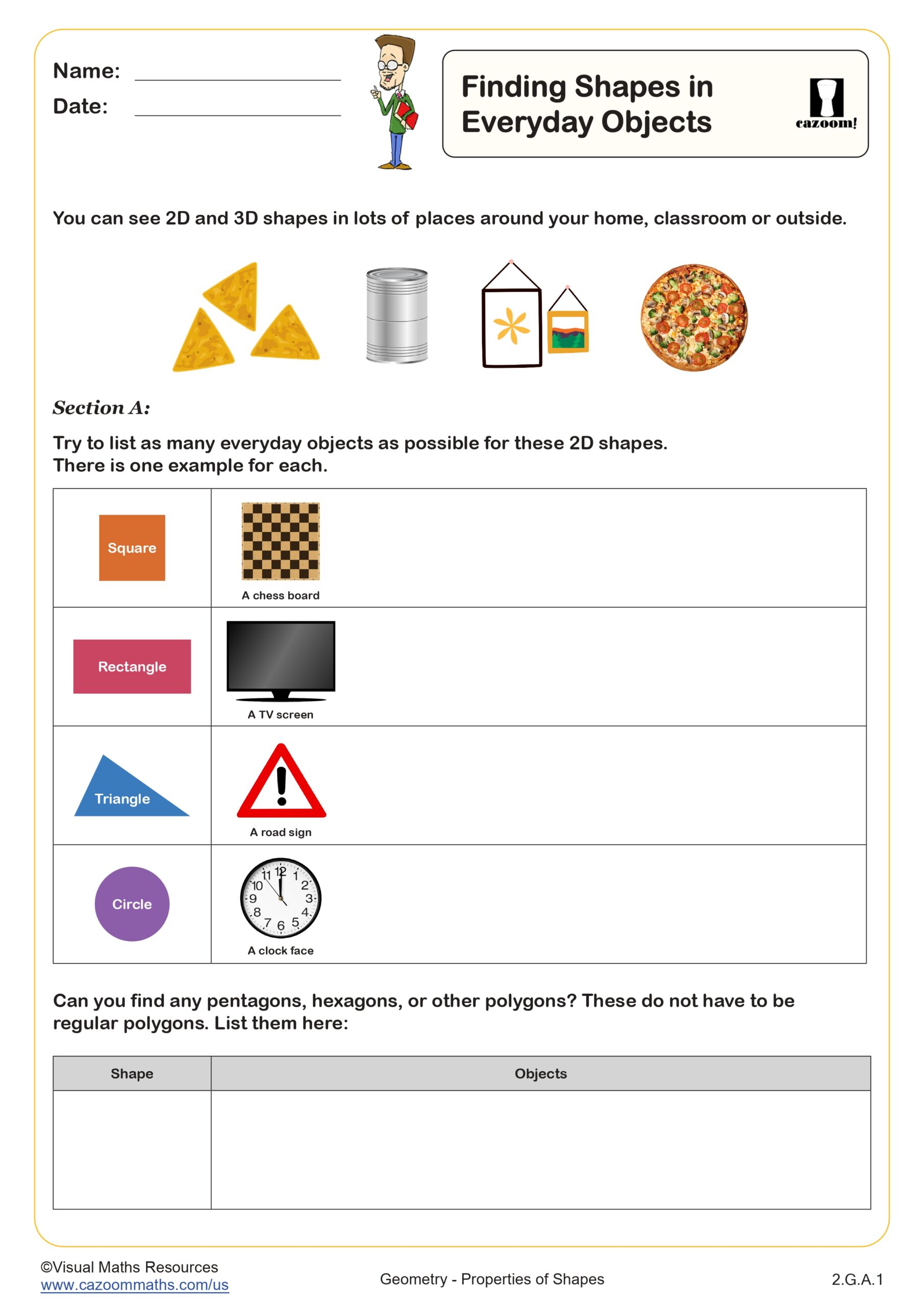
Lines of Symmetry (A)
Grades: 2nd Grade, 4th Grade
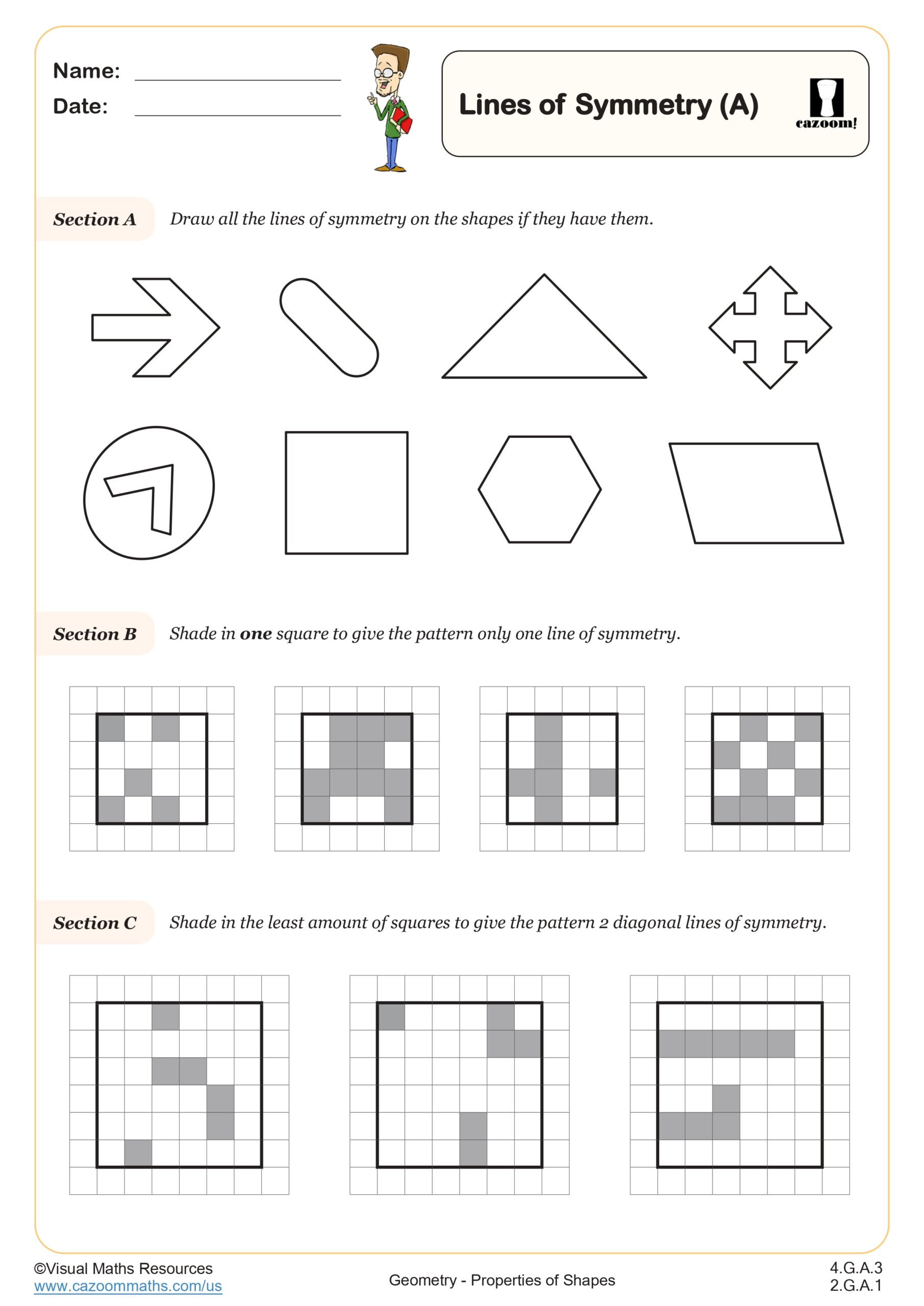
Vertical Lines of Symmetry (A)
Grades: 2nd Grade, 4th Grade
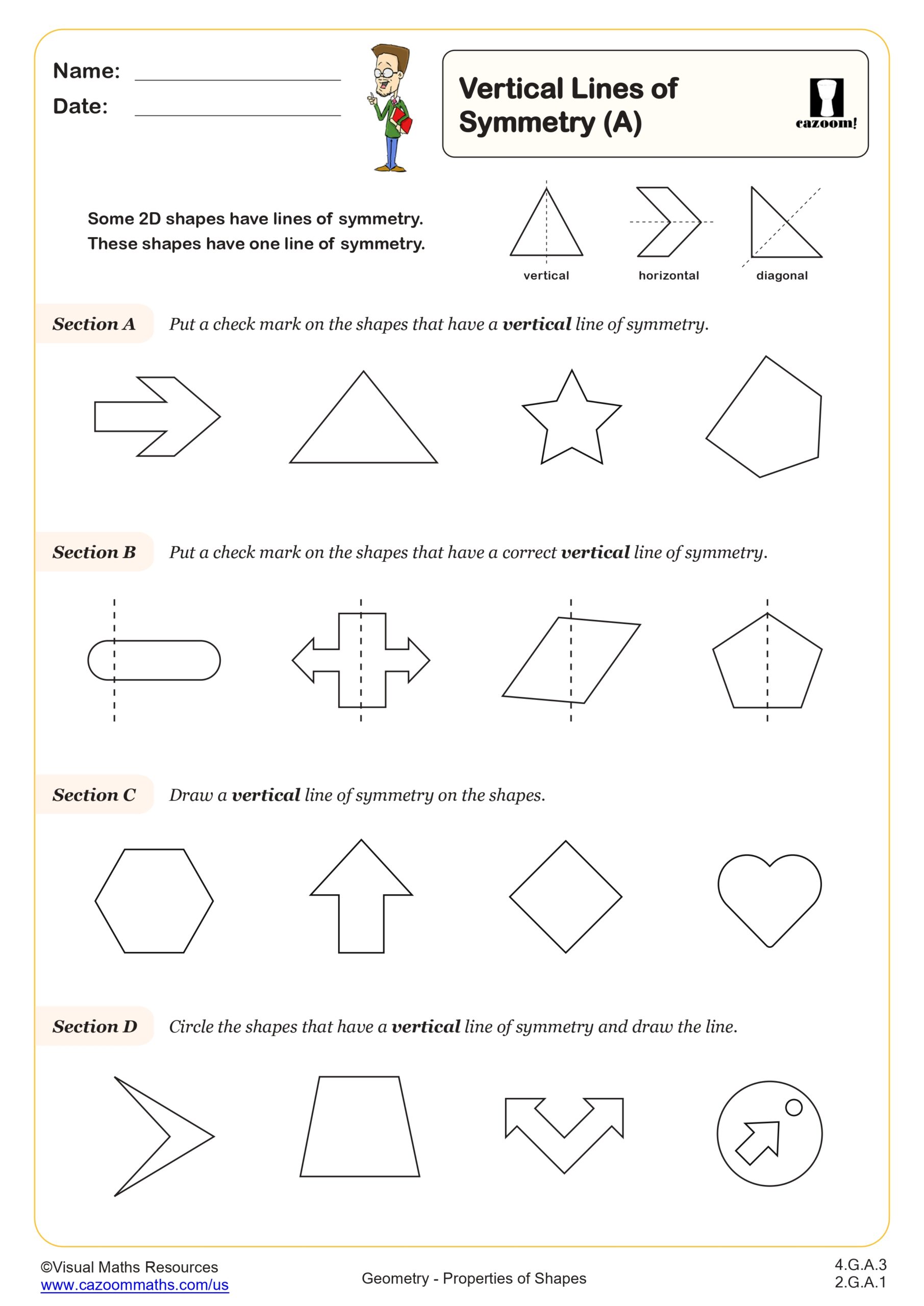
Vertical Lines of Symmetry (B)
Grades: 2nd Grade, 4th Grade
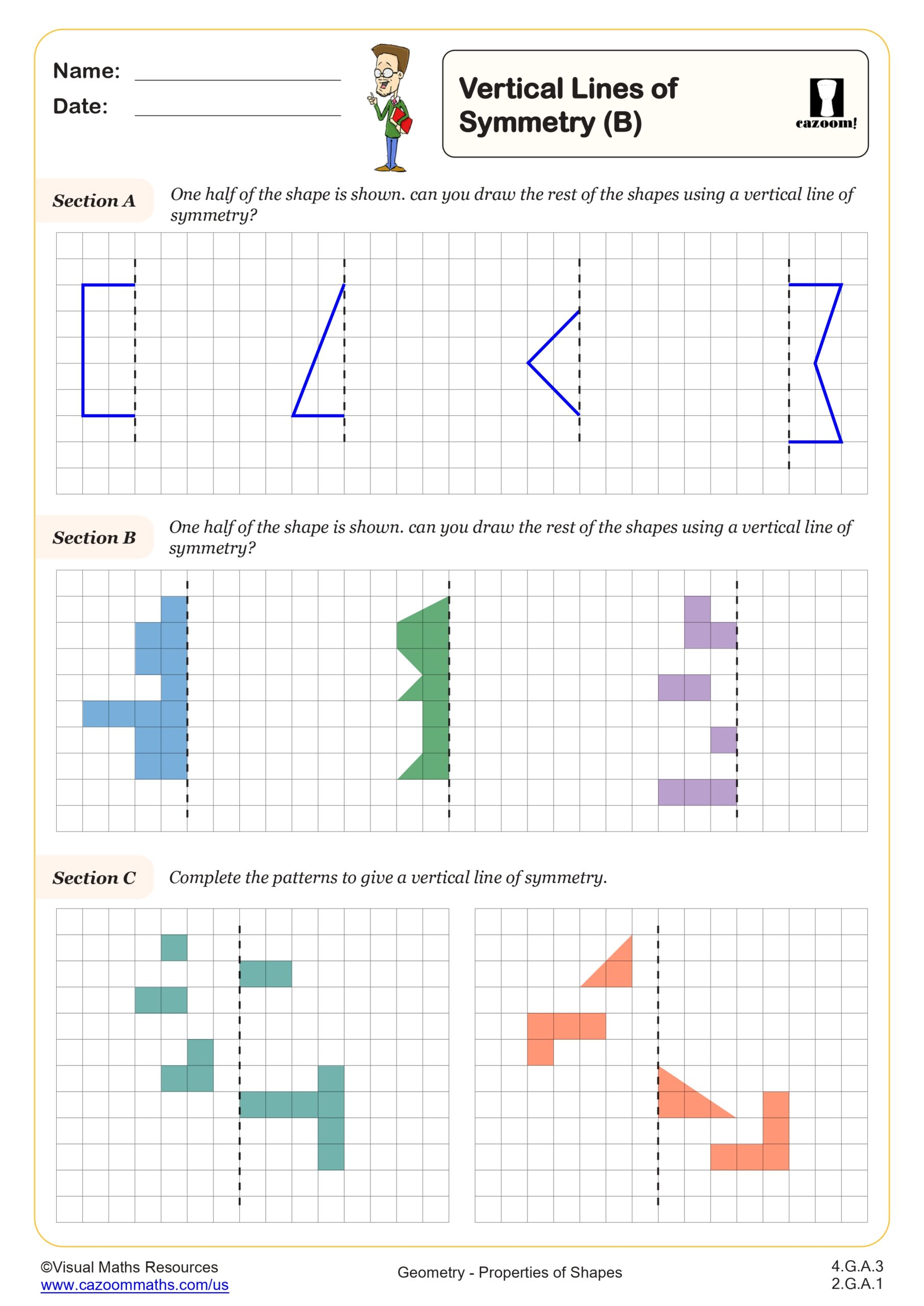
Lines of Symmetry
Grades: 4th Grade
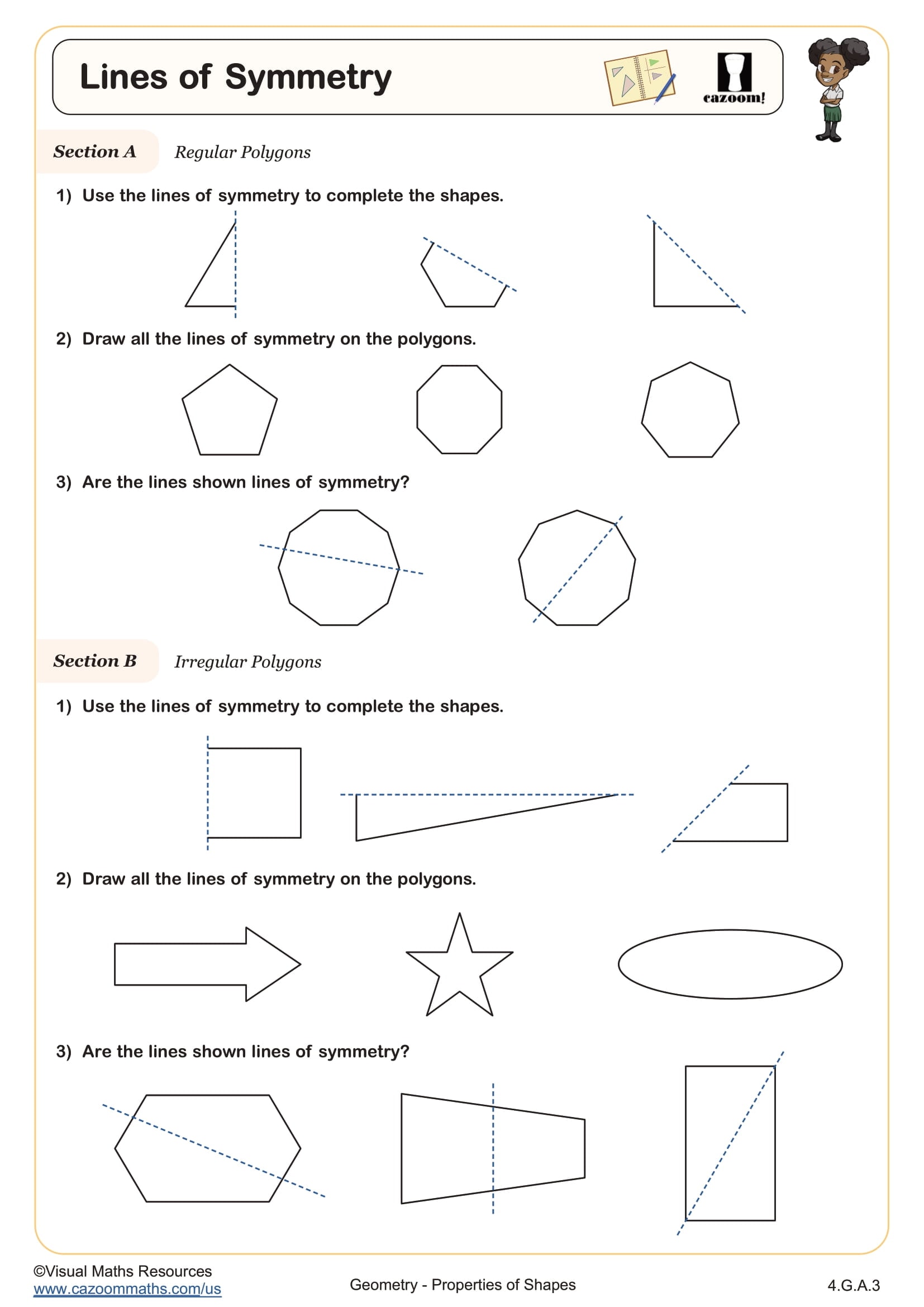
Parallel and Perpendicular Lines
Grades: 4th Grade
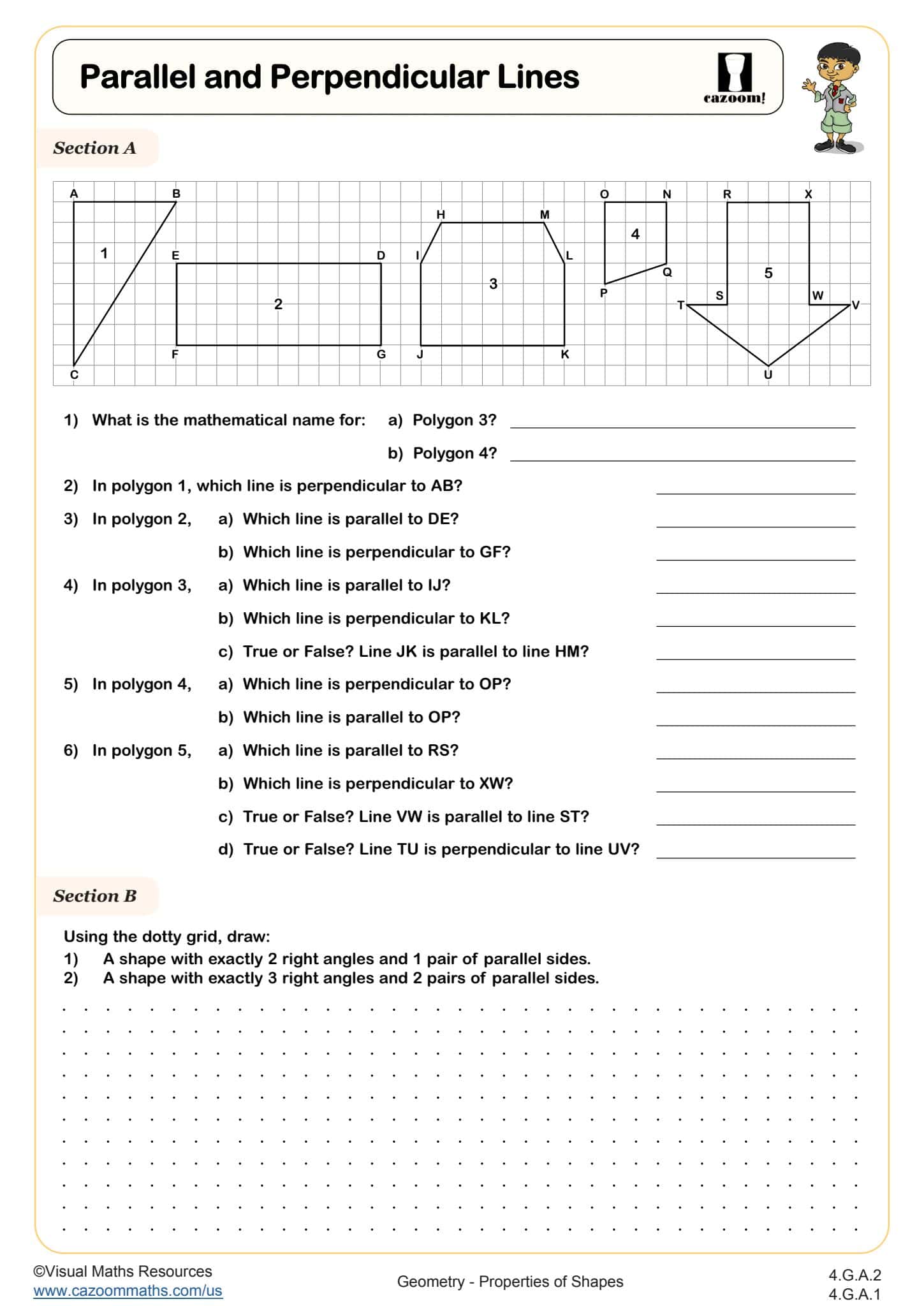
Surface Area - 'L' Shaped Prisms
Grades: 6th Grade, 7th Grade
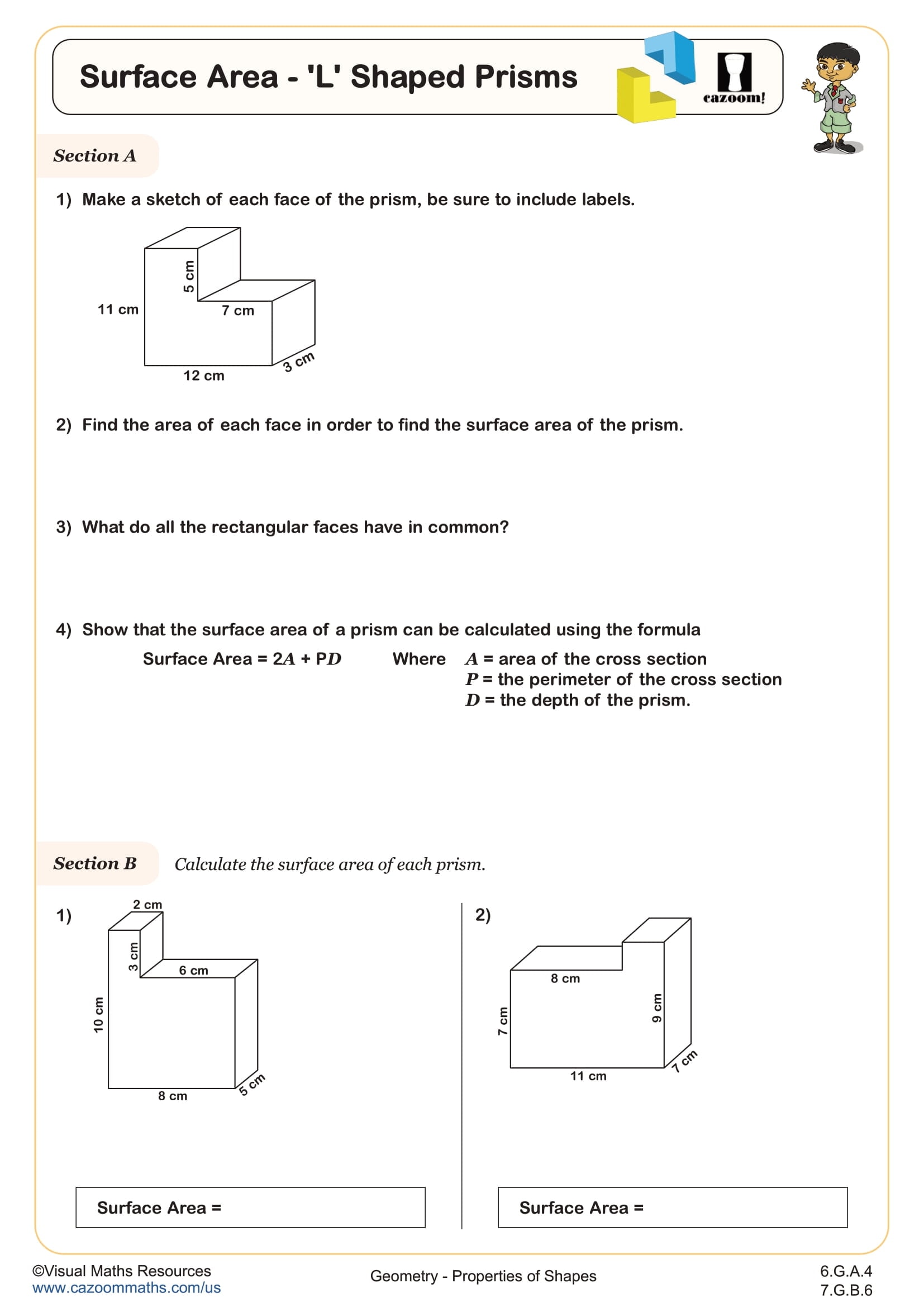
Area of Regular Hexagons
Grades: 7th Grade, 8th Grade
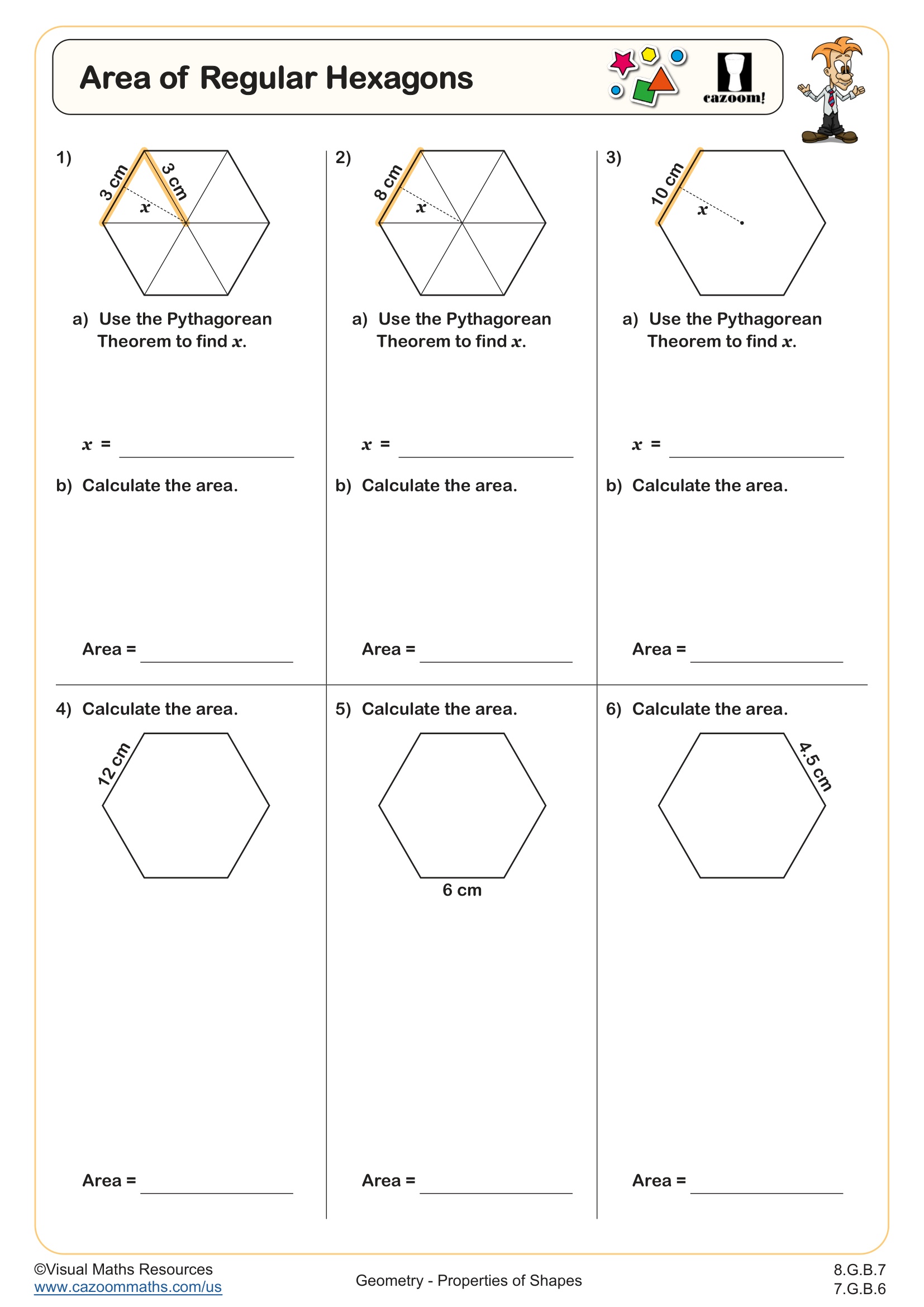
Cross Sections
Grades: 7th Grade
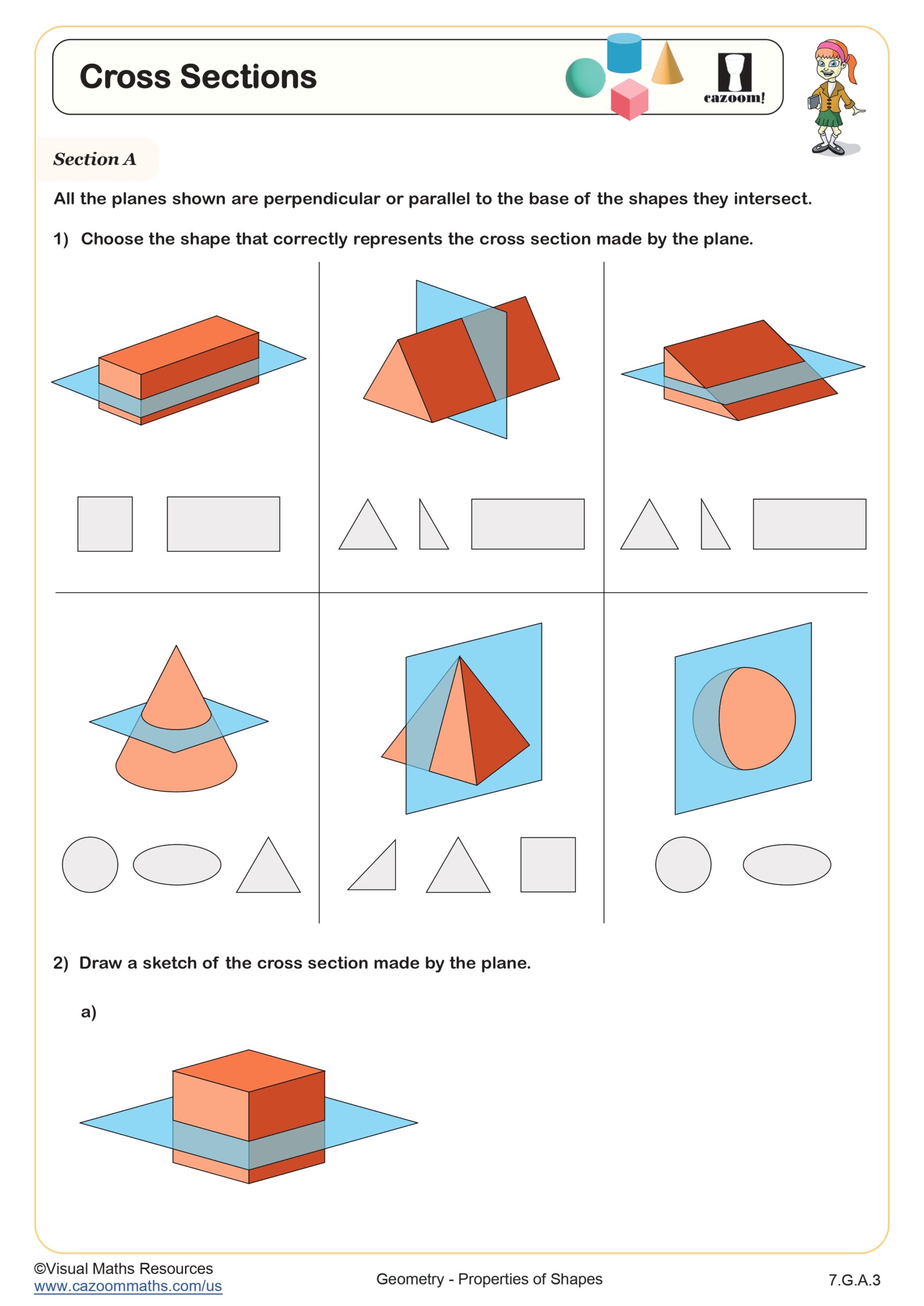
Describing Enlargements (A)
Grades: 8th Grade
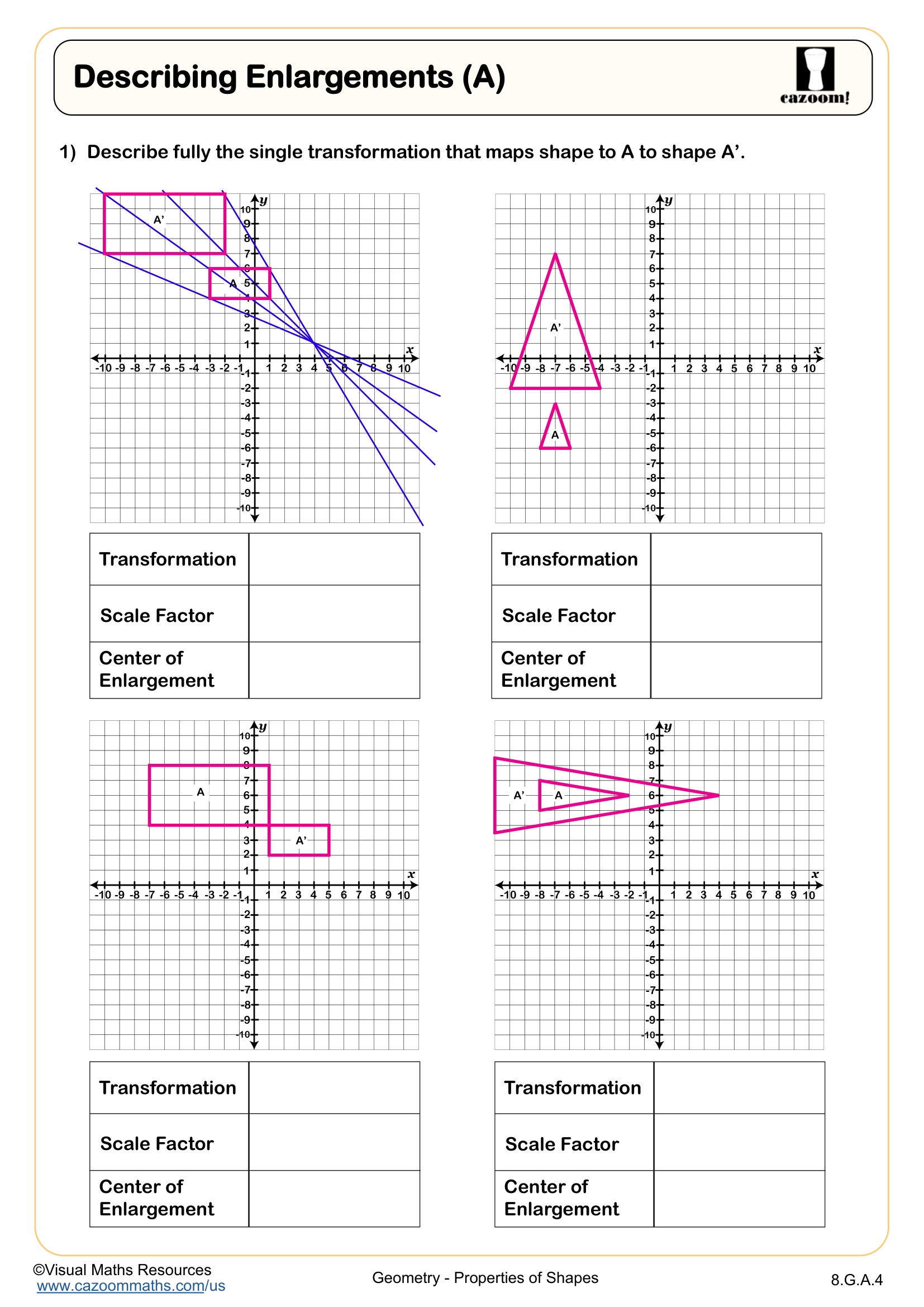
Describing Enlargements (B)
Grades: 8th Grade
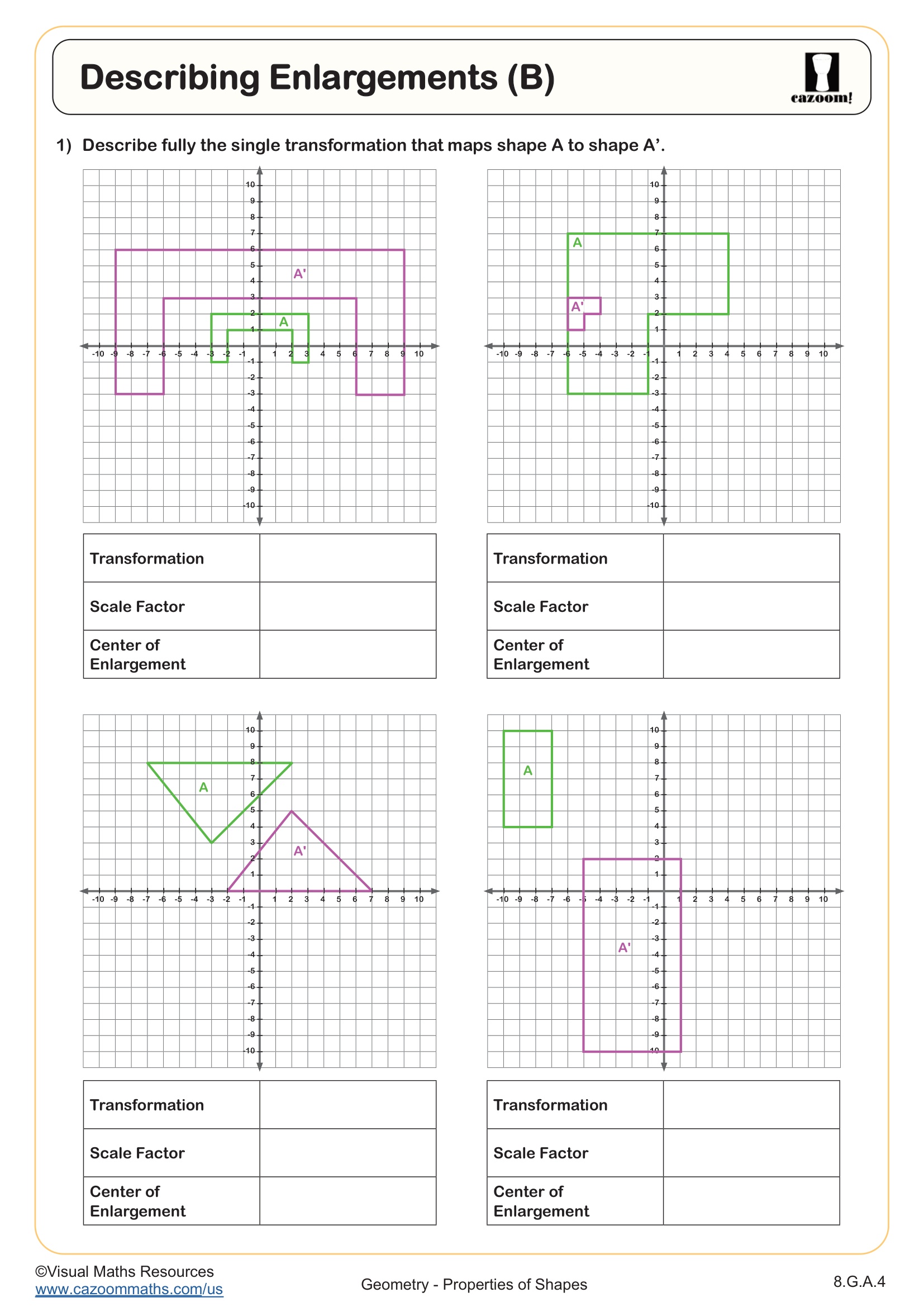
Enlargements Using Column Vectors
Grades: 8th Grade
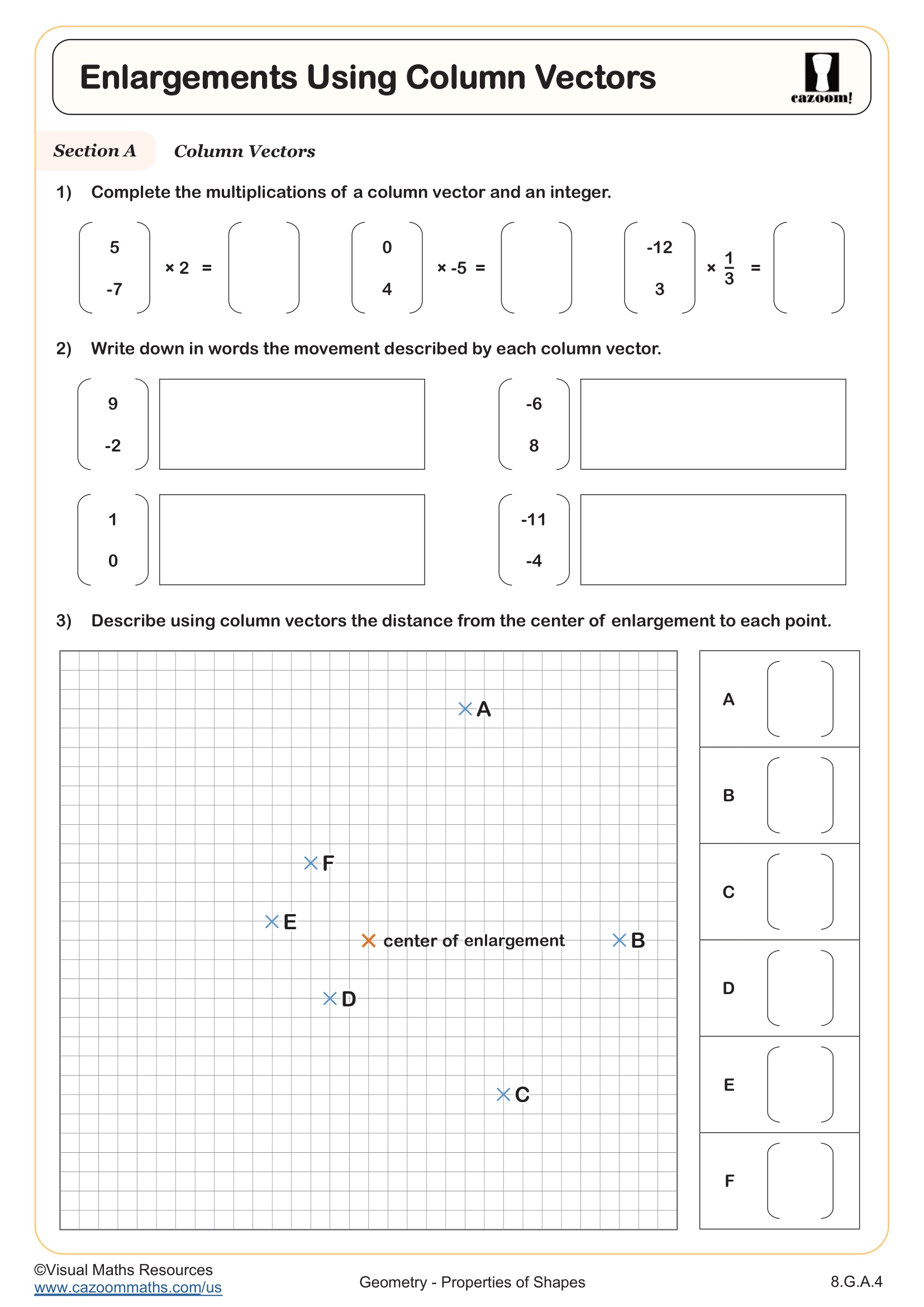
Labeling Right Triangles
Grades: Geometry, IM 3
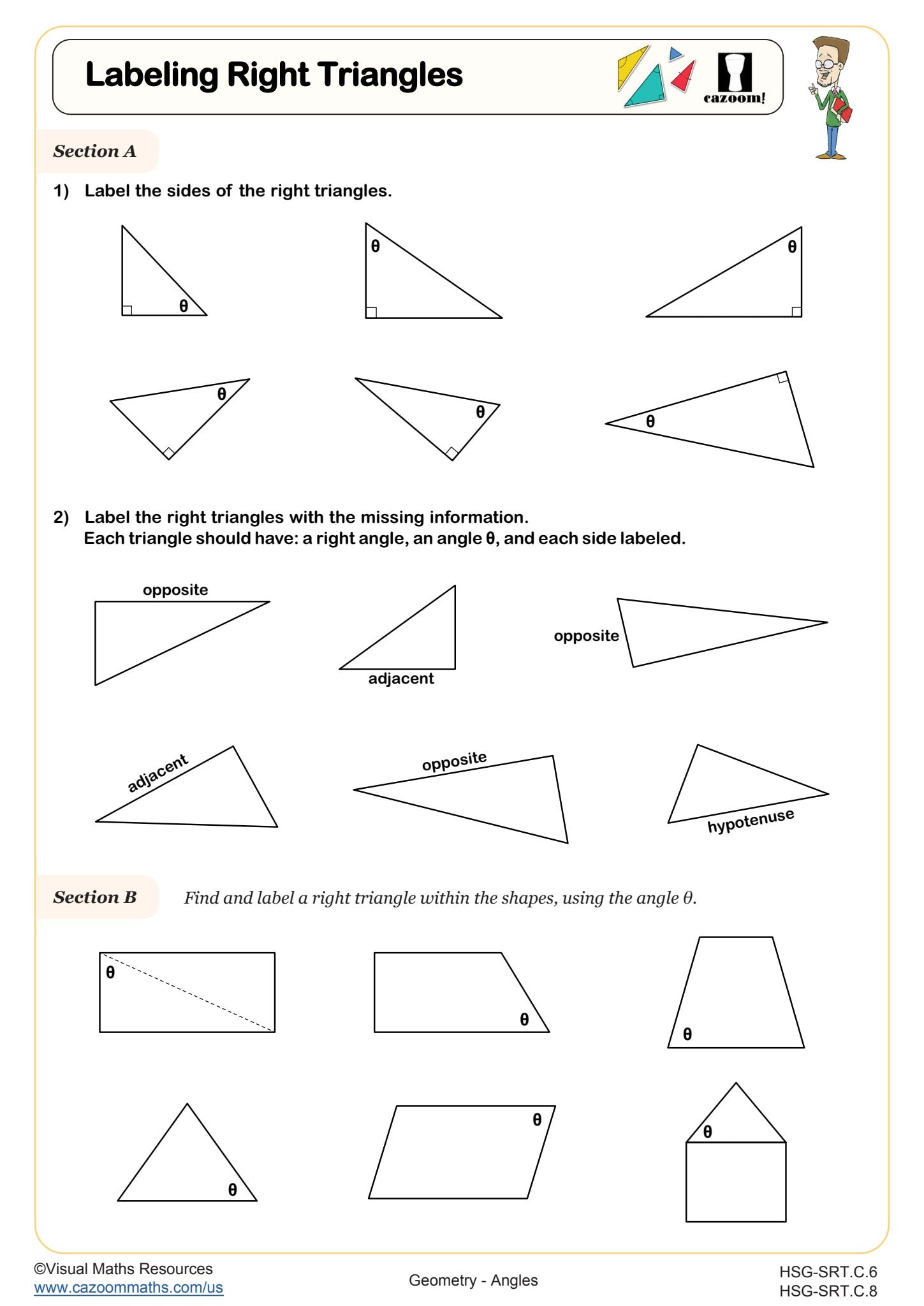
Parts of a Circle
Grades: Geometry, IM 1
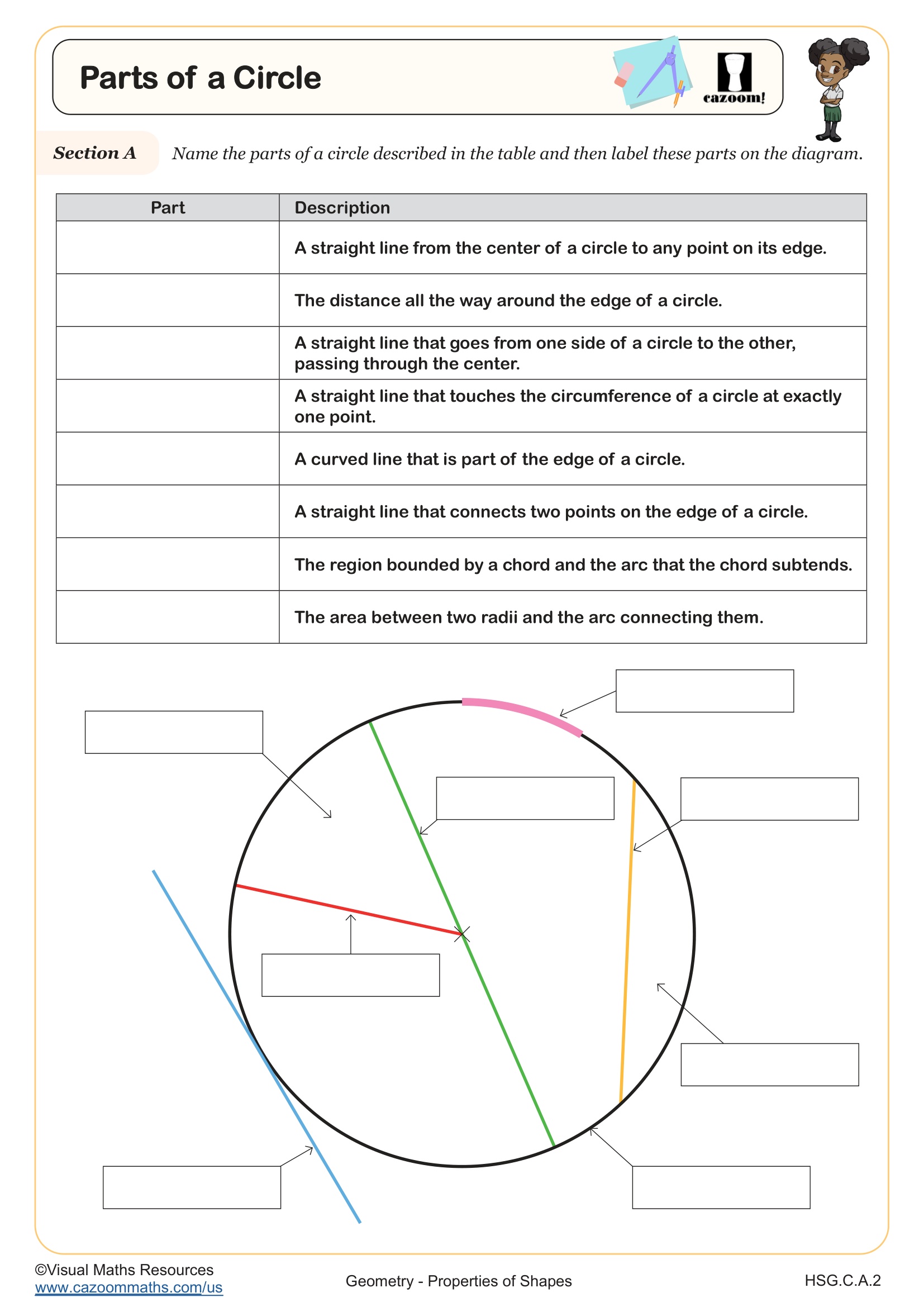
Printable PDF Properties of Shapes Worksheets with Answers
Download our printable PDF properties of shapes worksheet to give your students the push they need when learning different types of geometrical 2D and 3D shapes. Our math experts have specifically curated these resources in a way that your elementary, middle, and high school learners can master this concept using simple shapes with clear and easy-to-understand instructions. Hence, our Properties of Shapes worksheets are great for building a sense of core geometry and early problem-solving skills.
What Are the Properties of Shapes in Geometry?
In geometry, properties of shapes describe how we tell shapes apart. These include the number of sides, angles, vertices, edges, and faces. Shapes may also be described as regular or irregular, depending on whether their sides and angles are equal. Understanding these features helps students compare and classify both 2D and 3D shapes, preparing them for deeper geometry work in later grades.
Why Is It Important to Learn Shape Properties?
Learning the properties of shapes helps students build important spatial reasoning skills. By recognizing sides, angles, and symmetry, they begin to understand how shapes work in math and real life. These skills are important in geometry, art, science, and construction. Our worksheets give students the practice they need to describe, sort, and compare shapes confidently.
Real-Life Uses of Shape Properties
The properties of shapes are used in real-world situations all the time. Architects use them when designing buildings. Artists use them in design and drawing. Even reading maps or setting a table involves recognizing shapes and how they fit together. These worksheets use relatable examples to help children see how shape knowledge applies beyond math class.
Prerequisite Knowledge Before Learning Shape Properties
Before starting these worksheets, students should know basic 2D and 3D shape names. They should also be able to count, identify shapes by sight, and understand position words like edge, corner, and side. Knowing how to sort objects by simple features helps too. Our worksheets guide learners step by step into more detailed shape properties as they build their geometry skills.
FAQs: Properties of Shapes Worksheets
Q: What grades are these worksheets designed for?
A: They are best for students in 1st through 4th grade.
Q: Are answer sheets included?
A: Yes, every worksheet comes with a complete answer key.
Q: Can these worksheets be used at home?
A: Absolutely. They’re ideal for both classroom and home learning.
Q: Do these support Common Core standards?
A: Yes, they align with Common Core geometry standards for early grades.: They are best for students in 1st through 4th grade.
Q: Are answer sheets included?
A: Yes, every worksheet comes with a complete answer key.
Q: Can these worksheets be used at home?
A: Absolutely. They’re ideal for both classroom and home learning.
Q: Do these support Common Core standards?
A: Yes, they align with Common Core geometry standards for early grades.